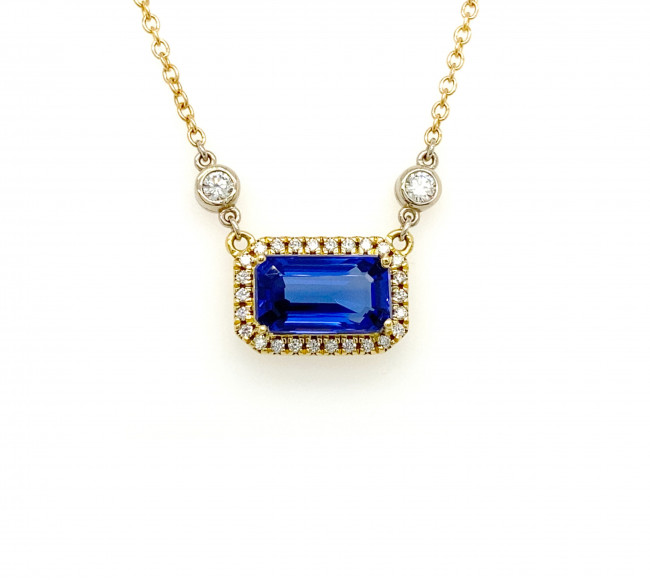
Table of Contents
December Birthstones Color: Beautiful Shades of Blue and Purple
Birthstone jewelry can take the form of stunning rings, elegant pendants, avant-garde earrings, and so much more. If you were born in December, read on to learn more about your birthstones and what you should know about them.
Looking for a unique and special gift for someone born in December? Why not design a custom piece of jewelry with their birthstone? At our store, we have a wide selection of birthstones to choose from, so you can create a one-of-a-kind piece that is sure to be cherished.
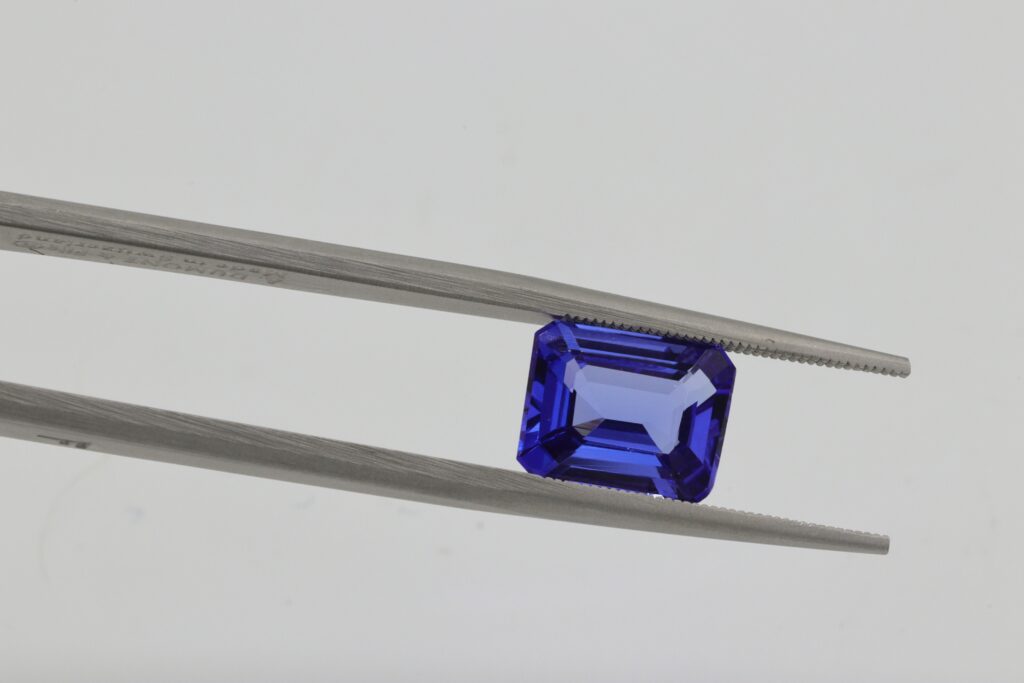
What Is the December Birthstone?
If you were lucky enough to be born in December, you have multiple birthstone options. Two of them are turquoise, tanzanite and zircon. What are these birthstones, though? How are they formed? What do they look like? And even more importantly, what types of jewelry do they lend themselves to? We’ll explore all that and more below.
What is Blue Zircon?
Blue zircon is a beautiful blue gemstone used in jewelry for centuries. In recent years, it has become increasingly popular as a birthstone for those born in December. Blue zircon is said to represent hope, joy, and purity, making it the perfect gift for someone you love.

East West Cambodian Blue Zircon Ring
This chunky, east-west Cambodian zircon ring is so stylish and regal. The east-west set of the gemstone adds a modern element to this timeless piece. A perfect gift for the lover of a cool tone color palette, the color blue, or the December birthstone.
What Is Turquoise?
A lovely blue-green with darker striations, turquoise is probably best-known in the US for its use in Southwest-style jewelry. However, there’s a lot you should know about this stunning gemstone, including the fact that it is not formed like most gems we use today for jewelry. However, don’t let that fool you. Turquoise stones have been used for millennia by people around the world.
For instance, the ancient Egyptians called it mefkat, which meant joy or delight. It was also treasured by the Aztecs, and when the Spanish arrived to conquer Mexico, Montezuma II believed that Cortés was an incarnation of one of the Aztec gods and handed over a hoard of turquoise. It has also been valued and used in China and other areas around the world.

Vintage Turquoise and Diamond Ring
Spanning several centuries and continents, turquoise has always been a prized semi-precious gemstone for its smooth, creamy, and vibrant appearance.
This classy vintage-inspired turquoise and diamond fashion ring has a square cut center sleeping beauty turquoise. It is like a painting surrounded by a gorgeous frame of 26 round cut single H-1 color, SI-1 clarity diamonds with an approximate ½ ct total weight.
How Is Turquoise Formed?
Turquoise is one of the rarer gems on the planet. It can only be found in very specific places and only occurs when specific actions take place. This stone is formed in desert areas with little rainfall. Acidic, copper-bearing groundwater must seep down through the earth and encounter both phosphorus and aluminum. That combination creates what scientists call hydrated copper and aluminum phosphate, or turquoise. If those conditions do not exist, turquoise cannot form.
How Much Is Turquoise Worth?
The value of turquoise depends on many different factors. However, you cannot apply the same rules to this stone as you would to a diamond or emerald. For instance, most turquoise is opaque, so clarity does not factor into the equation.
Instead, gemologists use a range of other factors to determine the quality of specific pieces. As a note, Lynch Station in Virginia is the only known location to produce translucent turquoise through a unique crystallization process.
Instead, turquoise is graded using different systems. A great deal depends on sentiment, as well as where the stone will be put on the market. The Persian grading system focuses on color clarity/purity and assigns the highest value to stones with the deepest blue color.
However, the American method relies on the source of the stone, the shade of blue, and the quality/characteristics of the spiderweb matrix that is included in many turquoise stones. In addition to those factors, there are better-known metrics, such as size (carat), cut style, weight, and hardness that also go into determining the value.
When it is all said and done, though, quality trumps size. In other words, a smaller piece of deeply colored turquoise could be worth significantly more than a larger piece of paler turquoise. There’s also an element of sentiment here, as the spiderweb matrix can add a lot of visual appeal that some people love, while others prefer pure stones without visible matrix lines in them.
Finally, you need to consider the setting. Some turquoise rings will be worth more than others simply because of the purity of the metal or the value of the additional stones in the ring.
Types of Turquoise Jewelry
Turquoise jewelry has a very long history. It can be used similarly to other gems, as stones placed in a setting, such as this salt and pepper shield cut diamond and turquoise ring featuring a unique piece of turquoise. Another great example is this. However, it can also be used in other things – belt buckles, for instance. Bracelets, pendants, rings, bolos, tie pins, cufflinks – the sky’s the limit for this versatile, beautiful blue stone.
For a classic look, try pairing turquoise jewelry with sterling silver. However, it also works very well with white gold and platinum. Interestingly, turquoise and yellow gold make a very lovely combination and can make stunning bracelets, pendants, necklaces, and rings.

Salt and Pepper Shield Cut Diamond Ring with Band
Truly one of a kind custom piece! Fall in love with our custom Salt and Pepper Shield Cut Diamond Ring with Band. The main ring has a gorgeous Botswana conflict-free .95ct Salt and Pepper shield rose-cut center diamond surrounded by 22 round accent diamonds .11cts with G-H color, Si-1,2 clarity set in 14k rose gold.
A matching custom rose gold band with six .03ct round diamonds G-H color with Si-1,2 clarity and one marquise blue turquoise accent was also designed to be the perfect accompaniment to this unique piece. Both rings were designed for a finger size seven but can be sized to meet client needs.
What Is Tanzanite?
Another December birthstone, the Tanzanite stone offers the traditional translucent sparkle most of us associate with gemstones. A truly stunning stone, tanzanite can appear violet, purple, and deep blue. However, all stones come from just one location on the entire planet – the slopes of Mount Kilimanjaro in Africa.
Technically, tanzanite is a variety of zoisite. You’ll find that many of the gems we treasure today are simply uniquely colored versions of other stones. For instance, amethyst is actually quartz but colored purple. Emerald is technically a variety of beryl, and ruby is a specific color range of corundum.
Tanzanite is named after the nation in which it was discovered (Tanzania). It is unique in that it changes color depending on the viewing angle and light source. If the viewer tilts the stone one way, it will appear a lovely shade of purple. Another direction makes it appear violet. A third direction and it will appear a deep blue, similar to some sapphires.
The trick to this color-changing performance? Crystal reflectivity within the stone itself. There’s more, though. Skilled gem cutters can transform stones through shaping so that they appear a specific color at all times, from a deep, royal blue all the way to violet-blue and blue-violet.
-
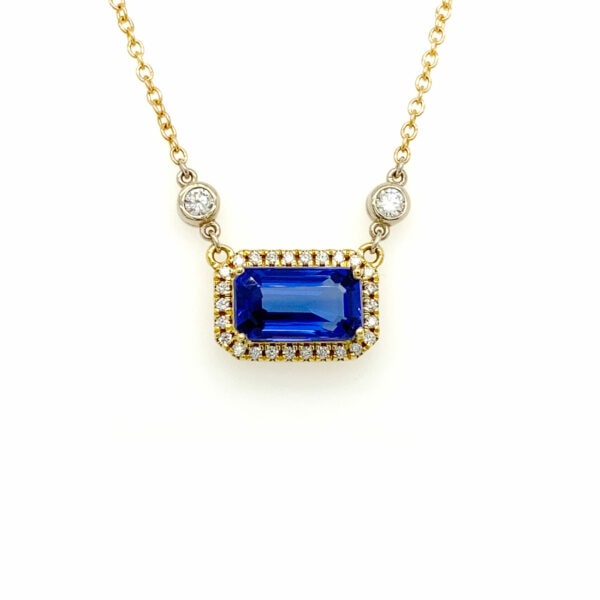 East-West Tanzanite and Diamond Necklace$4,495.00
East-West Tanzanite and Diamond Necklace$4,495.00 -
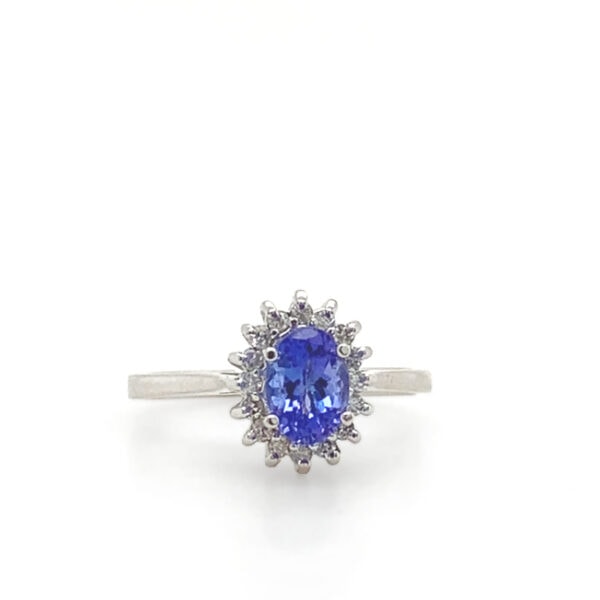 Tanzanite and Diamond Engagement Ring$395.00
Tanzanite and Diamond Engagement Ring$395.00 -
 Tanzanite and Diamond Ring$799.00
Tanzanite and Diamond Ring$799.00
How Is Tanzanite Formed?
All tanzanite crystals formed almost 600 million years ago in a time of intense seismic and volcanic activity. The process itself is called regional metamorphism and occurs when tectonic plates collide, creating immense heat and friction that morphs each plate’s igneous rock into the other’s.
Because each plate can contain dramatically different minerals, the results can be spectacular, such as with tanzanite. What minerals give tanzanite its unique combination of colors? Vanadium and titanium combine to create this trichroic gemstone.
The only place on the planet that the combination of vanadium, titanium, and regional metamorphosis came together in such a way is in Tanzania and the hills surrounding Mount Kilimanjaro. That rarity is part of what gives tanzanite stones their value.
How Much Is Tanzanite Worth?
Like most other gemstones, tanzanite is valued based on specific factors. These include the following: color, cut, clarity, and carat size. Tanzanite can range from $100 to $350 per carat, all the way up to $600 to $900 per carat for premium-grade, rarer stones.
It’s important to note that some factors can add or detract from the value of a tanzanite stone. For instance, fine cutting might add up to 15% to its base per-carat price, but poor cutting could reduce its value by as much as 30%. Clarity adjustments will also affect the value of tanzanite. VS clarity could drop the stone’s value by as much as 8%, while SI clarity could reduce it by 15% to 20%.
However, with all that being said, tanzanite’s main value is based on rarity. The finer the color and quality of the stone, the more expensive it will be. That means a smaller stone that is of higher quality could be worth more than a much larger stone that is not of the same quality.
-
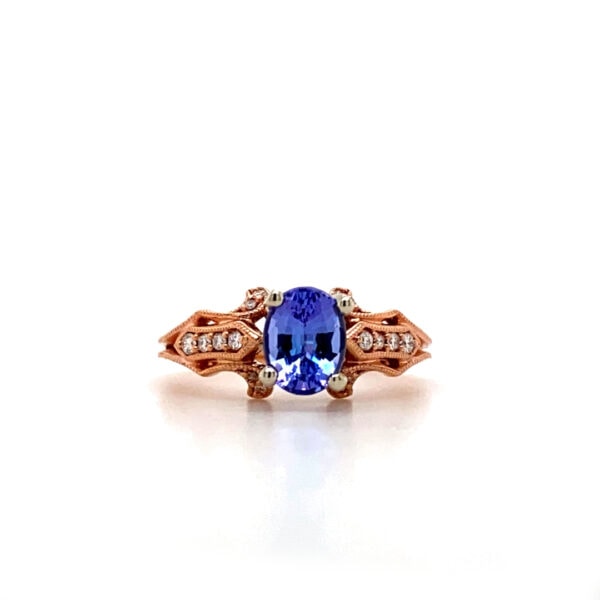 Tanzanite and Diamond Engagement Ring$595.00
Tanzanite and Diamond Engagement Ring$595.00 -
 Tanzanite and Diamond Ring$495.00
Tanzanite and Diamond Ring$495.00 -
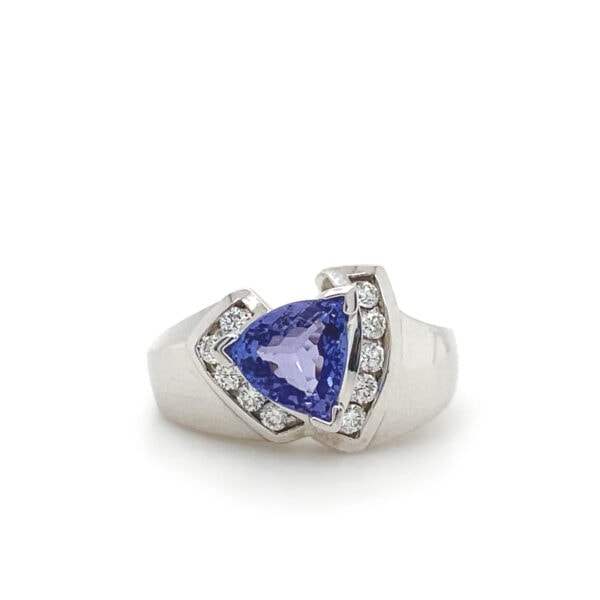 Tanzanite Diamond Ring$995.00
Tanzanite Diamond Ring$995.00
Types of Tanzanite Jewelry
Tanzanite makes a wonderful alternative to other stones, such as sapphires. It also pairs very well with diamonds and other gems, making it one of the most versatile and eye-catching options for a wide range of jewelry, including tanzanite rings, tanzanite pendants, and so much more.
For a modern twist on a classic combination of blue and white, consider this diamond and tanzanite ring set in 14k white gold. The setting’s unique design is at once elegant and thoroughly modern. Want something a bit more classic in terms of style and design? This diamond and tanzanite ring features an oval-cut tanzanite stone and a 14k white gold setting that creates a vintage look. Or for something totally different, this tanzanite and diamond engagement ring offers a center oval cut tanzanite stone surrounded by 16 diamonds in an elegant 14k rose gold setting.
Of course, those are just the tip of the proverbial iceberg. Tanzanite can be used in pendants, bracelets, earrings, and so many other choices. It pairs very well with diamonds, but don’t be afraid to try other combinations to achieve a unique look.
Tanzanite and emeralds make a bold statement. The same can be said for pairing tanzanite with rubies. You can also experiment with different settings – white gold is lovely, and rose gold stands out very well, but don’t forget about yellow gold and even platinum. Almost any combination can yield stunning jewelry for special events or even everyday wear.
Show Off Your December Birthstones All Year Long
If you were born in December, you have many different birthstone options – tanzanite makes a lovely statement, but don’t overlook the blue-green beauty of high-quality turquoise. Zircon is your third birthstone, and it can actually pair well with either turquoise or tanzanite to create a triple-birthstone design. Whatever you choose, you’ll have many ways to show off that birthstone all year long.
Whether you’re looking for a necklace, bracelet, or earrings, we can help you design the perfect piece. And with our expertise, you can be confident that your jewelry will be made with the highest quality materials.
